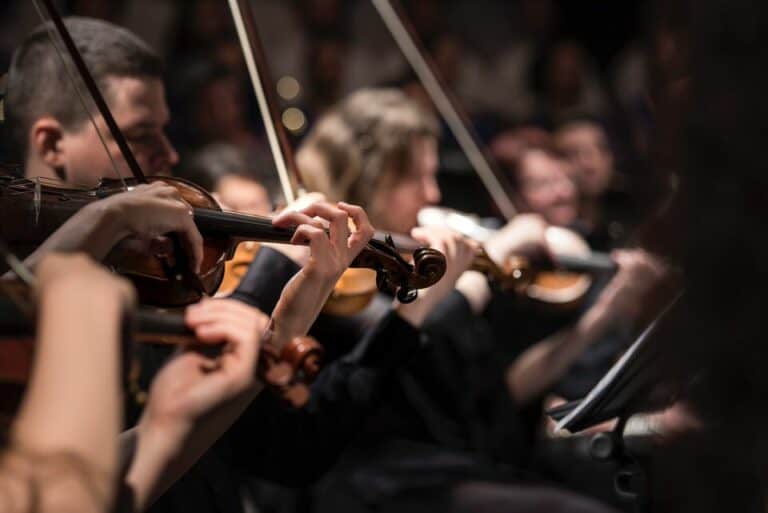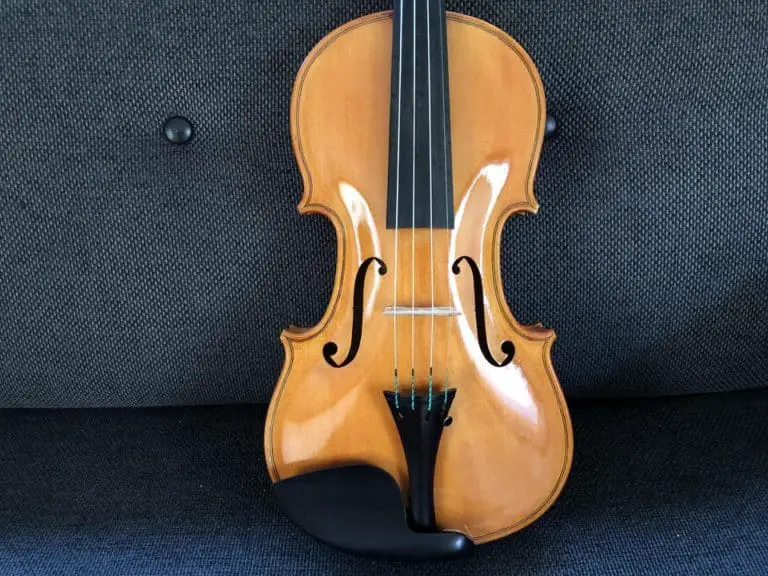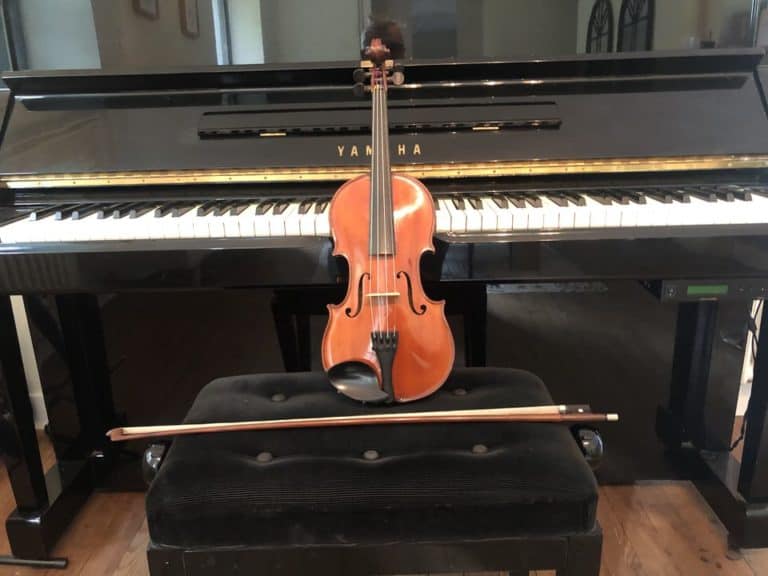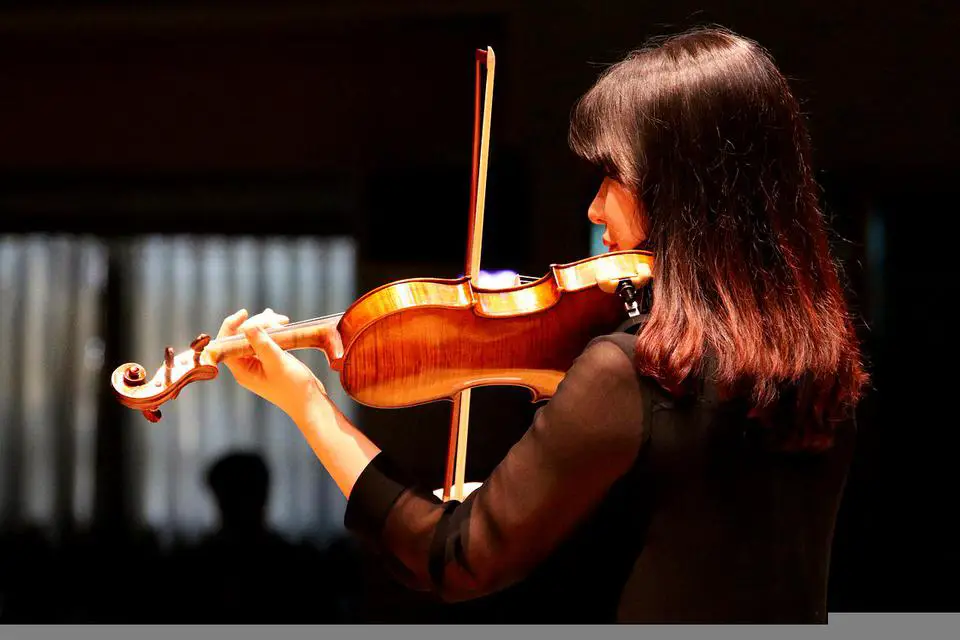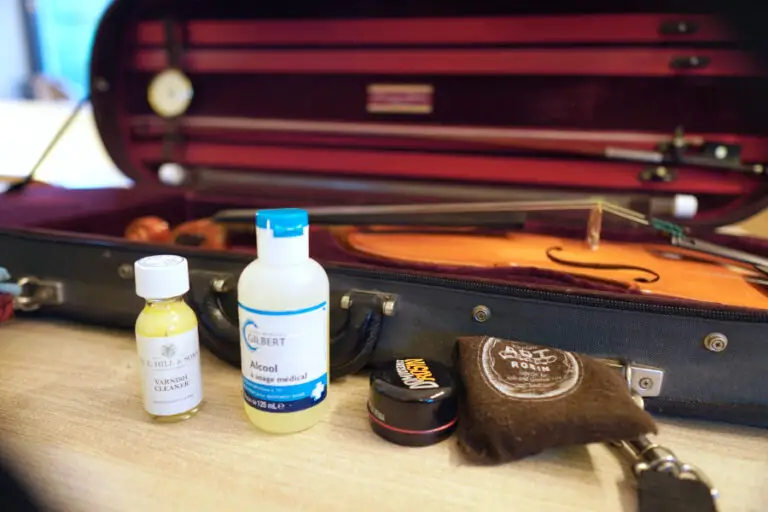How Young to Start Violin Lessons? Don’t hesitate!
Every parent wants to offer the best to their children. The more option your children have, the better. It is well known that music is a good way to increase many skills for a child: intelligence, focus, dedication… And violin is a prestigious and impressive instrument that has to be learned early. I have three children, and I have asked this question to myself many times.
So how young is best to start the violin?
5 to 6 years old is a good age to start the violin if your child can focus and is willing to learn. 7 to 8 is when most children start playing the violin because they gain maturity and know how to read. Violin at 3 years old is possible if child is mature enough.
Although most teachers recommend starting to learn the violin at the age of 7, many parameters differ from one situation to another, leading to failure in violin learning. Each child is different. Let’s see how we can determine when to start the violin and when to wait.
1. What is the best age to start violin lessons?
My best answer, all around and everything considered is the age of 6 if you want a single answer.
Why? Because many things are developed quite enough at that age.
- Arm size and violin size: the young violinist will be able to use a violin of half to three-quarter size and get a decent sound out of it. Quarter-size violins are more difficult to use, tune, and so on. Everything is so small that it can be difficult to get a sound out of it. Half-size violins are closer to regular violins and sound really better, which is encouraging for young children. It is closer to a musical instrument and less of a toy.
- Finger size: at the age of six, even smaller children have hands big enough to hold a violin and to put their fingers and press on the fingerboard.
- General attitude: children are used to going to school. They can stand for more than a few minutes now. They can focus for maybe half an hour at a time. And if they like learning music, they will happily be cooperative and learn with their teacher and parent’s help.
- Let’s not forget the music! At 6, a child can be interested in music, or at least like a couple of tunes where the violin plays a beautiful part. And maybe, though this can be passioning and debatable, a child can have a grasp on those things called Beauty and Art (let me use a capital letter!) 3 to 4 children are more plain imitating, 6 can develop already, maybe, a seed of personal and musical ability. Let’s plant that seed anyway: this is one of the best and more magical things a parent can accomplish in his life of education.
What age do international conservatories recommend to start the violin?
| Paris Conservatory | The first cycle starts at 3 | 10 is possible to start |
| Berlin Suzuki School | No minimum age | |
| Royal Academy of Music | First string experience starts at 3.5 | Junior academy starts at 8. |
| Julliard School | No minimum age | No beginners |
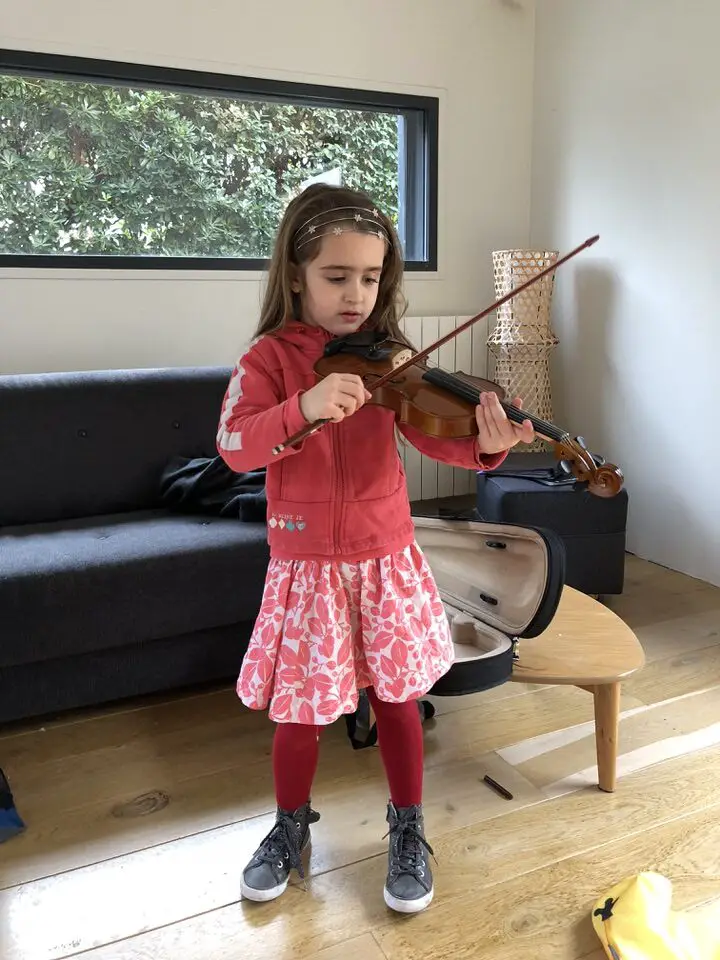
2. What are the qualities necessary to play the violin?
Starting violin lessons can be an exciting and rewarding experience for a child, and specific qualities can significantly enhance their learning journey.
First and foremost, a child should have a genuine interest in music and the violin. This intrinsic motivation is critical to sustaining their engagement and enthusiasm throughout the learning process.
Secondly, physical readiness is essential. The child should have sufficient hand-eye coordination and finger dexterity to properly handle the violin and bow.
Another crucial quality is patience. Learning the violin is a gradual process that involves mastering various techniques over time. Children who are patient and willing to persevere through challenging phases tend to make more consistent progress.
Alongside patience, a child needs a good sense of rhythm and timing, which are fundamental to playing any musical instrument.
Listening skills are also essential. Listening carefully to the sounds they produce helps children correct their pitch and improve their musical ear. This is particularly important for the violin, which doesn’t have frets to guide finger placement.
A supportive home environment is beneficial, where parents or guardians encourage practice and show an interest in the child’s musical development.
Discipline and routine are key. Regular practice is vital in developing skills, and a child who can adhere to a practice schedule will likely progress more quickly. An openness to feedback and the ability to accept constructive criticism are important for learning and improvement.
Emotional maturity is another aspect to consider. The ability to handle frustration and disappointment when things don’t go as expected can significantly impact a child’s learning experience. Finally, having a sense of responsibility, such as taking care of their instrument and remembering to practice, further contributes to a child’s readiness for violin lessons.
In summary, a child ready for violin lessons typically exhibits interest in music, physical readiness, patience, good rhythm, listening skills, a supportive home environment, discipline, openness to feedback, emotional maturity, and a sense of responsibility. These qualities collectively contribute to a fruitful and enjoyable learning experience in violin lessons.
3. Can a 3-year-old learn the violin?
I won’t say “it depends”… though it is a hard question to answer. In order to start the violin, a 3-year-old child needs to have certain qualities:
- Coordination between body parts;
- Focus;
- Calm attitude;
- Willing to imitate someone.
- A child, whether 3 or 4, has to be able to focus for a certain time to be able to learn the violin. Even if that focus can only last 5 minutes at a time, that can be enough, but it is necessary. A couple of 5 minutes sequences with play in between can be a good start. Violin is a good way to start learning how to focus, anyway.
- Learning how to play the violin needs coordination in body gestures. If your child is not too small, and not a “baby” anymore, his gestures can be trained regularly to play the violin. His or her hand and arm size must be big enough to hold a violin of quarter size.
- A calm attitude is necessary; a child too nervous won’t be able or like to focus on something. There is a danger to throw away and break the violin. In any way, a child who is not ready to start the violin at 3 may be perfectly ready at 4!
- A young child doesn’t intellectualize things, he or she imitates. That is why there must be a role model around the child. A teacher once a week might not be enough at that age. A brother or sister to imitate or an adult is the best scenario. The 3-year-old child sees his or her parents and wants to do the same!
In any case, starting the violin at 3 is a way to give an early start and be less intimidated later when things get more serious.
4. Advantages and disadvantages of starting the violin young
Advantages of learning the violin before the age of 5
- Young children do not use their intellect as much as we do. They mimic and learn really fast. These mimicry skills offer a quick and painless learning process.
- A complete violin beginner can fear the tedious part of the starting phase: it is harsh! A young child will completely forget that and will be happy to just start and play. A young child will have a positive and fearless energy to tackle that difficult instrument.
- The earlier a child learns to play, the more likely music and the instrument will become a mother tongue. When we compare how we speak our first language compared to our second language: this is a no-brainer.
- Young children want to please their parents and teachers. This is not a time when they will oppose resistance and rejection of new obligations.
Disadvantages of learning the violin before 5
- There aren’t any disadvantages as learning the violin can’t do any harm: if a child really doesn’t want to learn an instrument, it is wise to just stop and try again a couple of years later.
- Children don’t mature at the same pace, both physically and intellectually. It might be just impossible for some young children to focus enough of their attention to learn an instrument. Some won’t be able to adjust their movements precisely enough to start to play. In any case, it will be good for their education outside the musical world.
5. Is starting the violin at the age of 7 or 8 too late?
This time, the answer is easy: no. It is not too late to start the violin after 7 years old.
The great Nathan Milstein started at the age of 7. Isaac Stern started the conservatory at the age of 8, but he had already had music lessons from his mother.
The violin is a difficult instrument. To play it well requires many qualities, and if one starts early enough, the violin can become like a mother tongue for the child. And 8 is not too late to develop such a close and innate relationship with the instrument.
Starting early gives you more time for music: the earlier you start, the earlier you can overcome technical difficulties. Later, interpretation and music can be emphasized in the scholarship process.
At 7 and 8, a child can leapfrog and learn really quickly as well. At the age of 11, with the added maturity and dedication, there can be little to no difference between the child that has started at 8 compared to 6.
And even for children who won’t “make it to the Chicago symphony orchestra,” there are so many benefits in learning the violin, whether at 6 or 8: focus, self-discipline, dedication, patience, social skills, ear and listening to others, art, and on and on. So, let the best violin virtuosi don’t discourage you from presenting a violin to your child.
You won’t make a world class virtuoso by handing a violin over to a 3 year old child, neither prevent he or she to have a brilliant career by giving lessons at the age of 8.
The road to violin mastery is long and patience is the most important element to success.
6. When do violin teachers usually get the best results with children?
- A 3-year-old child can be open to learning the violin, but it is really rare; it is not a good idea to force one to start playing an instrument. Only in rare instances will the teacher have that opportunity. In most cases, it is really difficult to teach such a young child.
- Between 5 to 6 is a good age to start. It of course depends on the child’s character, maturity, and motivation. But usually, it is an age when a toddler can withstand ten minutes of concentration or more and is willing to emulate his or her teacher.
- 7 or 8 years: it is an age when a child knows how to read and has already gained some maturity. If the boy or the girl is motivated and loves the instrument, the teacher will find it easier to teach at that age. It is an age when I have found the best results on average. And it is far from being too late.
Whatever the age at which a child starts the violin, here are the qualities that can be developed by learning such a magical and demanding instrument: I have discussed how playing the violin is good for kids in that blog post.
7. When did these violin legends start playing the violin?
Here is an overview of the ages at which some renowned violinists began their musical journey:
- Hilary Hahn: Hilary Hahn, an internationally acclaimed violinist, began playing the violin just one month before her fourth birthday, enrolling in the Suzuki Program of Baltimore’s Peabody Institute. Her early start in music was marked by her first public performance at the age of five.
- Joshua Bell: Joshua Bell displayed an early interest in music, starting violin lessons at the age of four. His unique initiation into music came when his mother discovered that he had stretched rubber bands across his dresser drawer handles to pluck out music he had heard her play on the piano. This led to him receiving his first scaled-to-size violin at age five.
- Maxim Vengerov: Maxim Vengerov began studying the violin at the age of five under Galina Turchaninova. However, some sources also mention that he started playing the violin at the age of four, showcasing his precocious talent early on.
- Janine Jansen: Dutch violinist and violist Janine Jansen started studying the violin at the age of six. She first considered the cello but eventually chose the violin, leading to her solo performance with the National Youth Orchestra of Scotland.
- Anne-Sophie Mutter: Born in Rheinfelden, Baden-Württemberg, Anne-Sophie Mutter started playing the violin at the age of five. Her early talent was nurtured in Germany and Switzerland, paving the way for a successful career highlighted by her debut with the Berlin Philharmonic in 1977.
- Viktoria Mullova: Viktoria Mullova was encouraged to start her violin training at the age of four by her father, Yuri Mullov, who was a physicist and engineer. Her early training set the stage for her eventual rise as a prominent violinist.
- David Oistrakh: David Oistrakh, born into a Jewish family in Odessa, started his studies of the violin and viola at the age of five. He was a pupil of Pyotr Stolyarsky, embarking on his musical journey at a very young age.
- Yehudi Menuhin: Yehudi Menuhin began learning the violin at age four, under the instruction of Sigmund Anker. His parents initially wanted Louis Persinger to teach him, and Menuhin eventually took lessons from Persinger. By the age of seven, he was performing solo with the San Francisco Symphony!
- Jascha Heifetz: Jascha Heifetz, a child prodigy and one of the most famous violinists of the 20th century, started playing the violin at the age of three. Born in Vilna, Lithuania, Heifetz gave his first public performance at the age of seven.
- Nathan Milstein: Nathan Milstein began studying the violin at the age of seven. His early training set the foundation for his successful career as a virtuoso violinist.
These violinists, each with their unique backgrounds and early starts, demonstrate the diversity and richness of paths leading to mastery in violin playing. Their early initiation into music, often under the tutelage of esteemed instructors, laid the groundwork for their extraordinary careers and contributions to the world of classical music.
Each of these violinists’ journeys highlights the unique pathways to mastering this instrument, with most starting their training at a very young age, demonstrating the importance of early exposure and training in the development of musical talent.


